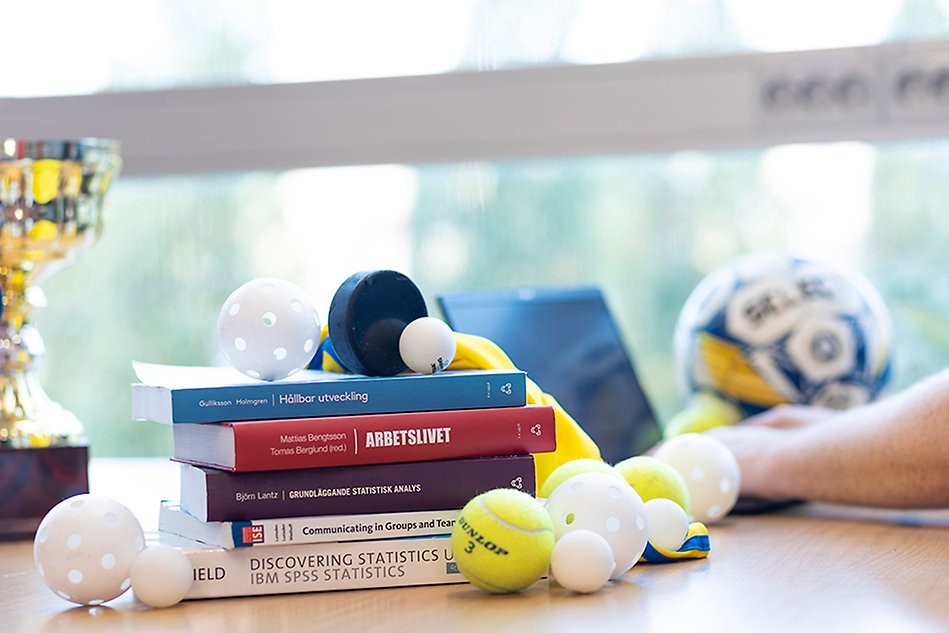Updated national guidelines to improve support for elite athletes with dual careers
Sweden’s national guidelines for supporting elite athletes who pursue higher education studies have been updated. These guidelines are the result of extensive collaboration between the Swedish sports movement and academia, with Halmstad University contributing through its research.
“Our evaluations have shown that the guidelines are valuable, as they have brought clarity and direction to the development of the support system. Hopefully, the updated guidelines will lead to further advancement.”
Lukas Linnér, Senior Lecturer

Most elite athletes in Sweden combine their careers in sports with studies or work – a so-called dual career. To support elite athletes in combining sports with higher education, the Swedish Sports Confederation organises a national system through National Sports Universities and Elite Sports-Friendly Higher Education Institutions.
“Based on both national and international research, national strategies, and practical experience, a national working group has developed updated guidelines for the support system”, says Lukas Linnér, Senior Lecturer at Halmstad University, who coordinated the work together with Kent Lindahl from the Swedish Sports Confederation.
A joint dialogue between and academia
Sweden was among the first countries in Europe to develop national guidelines for dual careers. The first edition was introduced in 2018, but much has changed since then.
“I believe we are quite unique globally, not only in updating these guidelines, but also in our close cooperation, where sports and academia engage in a joint dialogue to define the structure of the national system”, says Kent Lindahl.
Research at Halmstad University, combined with well-established practical experience from the field, has played a crucial role in the development of the new guidelines.
“I am proud of the teamwork and collaboration behind these guidelines. As a researcher, I see no greater value than when our work contributes to societal development”, says Lukas Linnér.
Three additions to the updated guidelines
The guidelines present a national model for cooperation between academia and the Swedish sports movement. At the heart of the model is a coordinated support system that allows elite sport and academic studies to be adapted to one another. Central to this is the creation of an environment that supports dual careers by enabling elite athletes to pursue both their academic and sporting development – while also achieving balance in life.
The entire document has been updated in light of new knowledge, with three new main elements standing out:
- Higher education institutions are encouraged to establish a support team for dual careers comprising various roles to enhance coordination and mutual understanding.
- Principles of flexibility in sport are emphasised to underline the importance of adaptation on the part of the sports sector as well.
- Competence centres are introduced as a structure to bridge the gap between institutional research and the needs of the sports sector.
“Already in the previous edition of the guidelines, Sweden was slightly ahead in proposing the role of a Dual Career Coordinator at higher education institutions. Research conducted since then has confirmed the value of such support, and the updated guidelines now define three distinct support roles”, explains Lukas Linnér, who also serves as Head of operations and development for Halmstad University as a National Sports University, and continues:
“Our evaluations have shown that the guidelines are valuable, as they have brought clarity and direction to the development of the support system. Hopefully, the updated guidelines will lead to further advancement.”
Text: HILDA LIBERG
Photo: IDA FRIDVALL
Facts
The national working group consisted of Lukas Linnér and Kent Lindahl, along with Natalia Stambulova (Halmstad University), Pernilla Eriksson (Umeå University), Christian Augustsson (Karlstad University), and Agnes Wredenberg (Mid Sweden University). Dialogue and consultations were held with all 22 involved universities and sports federations. The guidelines were reviewed by the universities, sports federations and support organisations, including the Swedish Sports Confederation, the Swedish Olympic Committee, and the Swedish Paralympic Committee.

